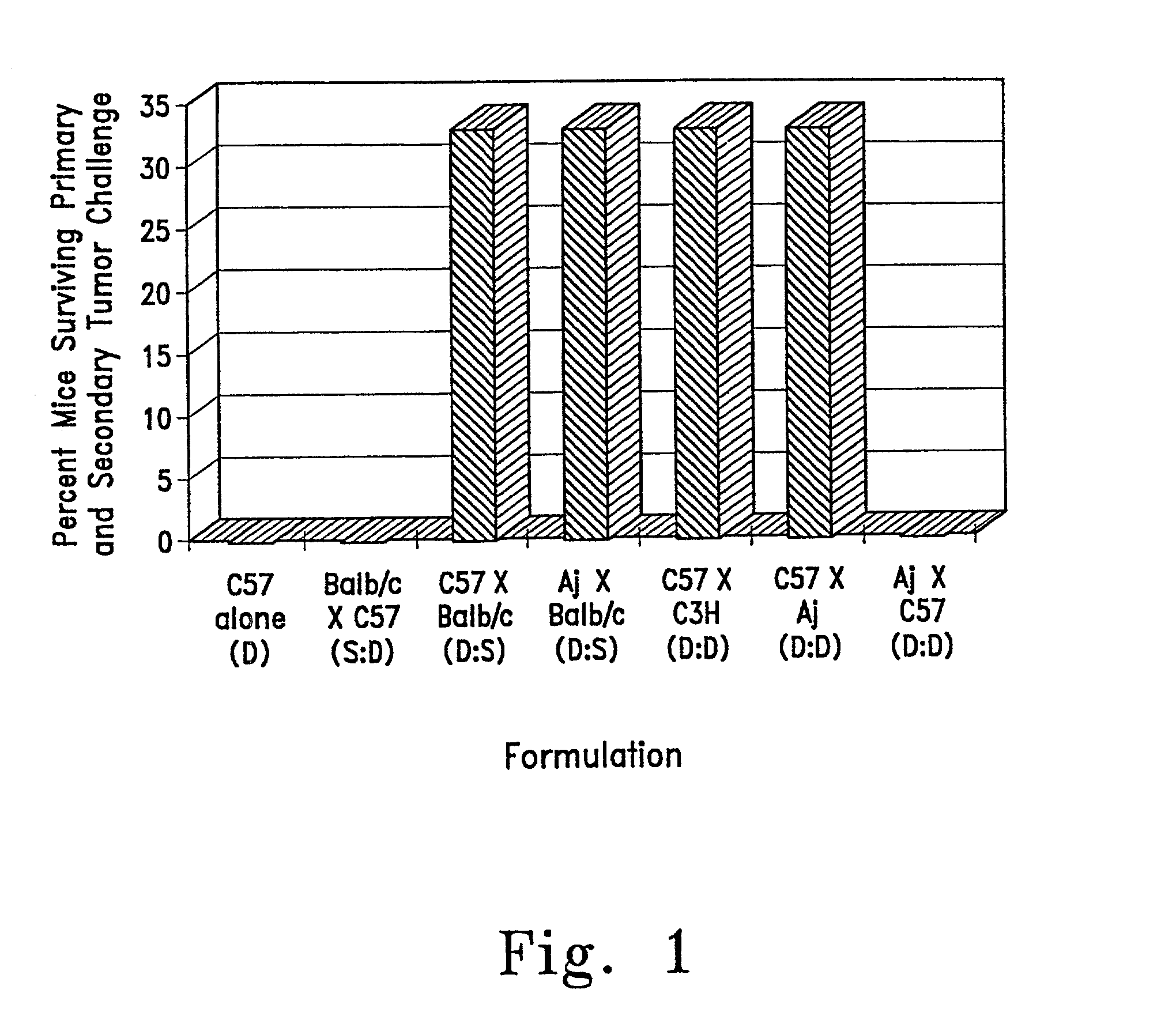Treating tumors using implants comprising combinations of allogeneic cells
- Summary
- Abstract
- Description
- Claims
- Application Information
AI Technical Summary
Benefits of technology
Problems solved by technology
Method used
Image
Examples
example 1
Mixed Lymphocyte Culture Procedure
[0137]Collection of responder PBMC from unrelated donor: Peripheral blood mononuclear cells (PBMCs) were collected by leukapheresis from normal healthy donors unrelated to the patient to be treated. Donors were pre-screened to test for complete blood count (CBC) with differential Hepatitis A, B, and C, VDRL, and HIV-I.
[0138]Approximately 150 to 300 ml of leukapheresis suspension containing PBMC was collected from each donor, using standard blood donation procedures for supportive apheresis according to, the manufacturers' instructions. The leukapheresis was performed using a Fenwall CS 3000 (Deerfield, EL) blood cell separator. A flow rate of 40 to 50 ml / min for 2 to 4 hours with lymphocyte yield of 2-4×109 processed a total donor blood volume of 7,000 to 12,000 ml to yield 200 to 250 ml of leukapheresis suspension having less than 1 ml of red cells. If a Cobe 2997 blood cell separator, was used, the centrifuge rate was 5×g, the flow rate was up to ...
example 2
Clinical Trial Using Alloactivated Cells Implanted at the Tumor Sites
[0158]This experiment confirms that allogeneic cells alloactivated using patient leukocytes are effective in cancer treatment.
[0159]A Phase I / II clinical trial was conducted to examine the feasibility, tolerability, toxicities and clinical effects associated with a single intratumoral injection of allogeneic lymphocytes sensitized against patient alloantigens. This trial is conducted under the auspices of the appropriate ethical approval committee, and in accordance with a protocol under the U.S. Food & Drug Administration.
[0160]Eligible patients were men and women between 18 and 85 years of age. A total of ten patients were studied. Eight patients were enrolled in the trial, and two additional patients were treated off-study on a compassionate basis. Nine of ten patients had locally advanced, surgically unresectable pancreatic tumors; 40% of the patients had Stage II disease, 30% had Stage III disease and 20% had ...
example 3
Measurement of the Degree of Alloactivation
[0177]In order to ensure the production of high quality effective MLC cells, a method of measuring the potency of the alloactivated cells can be employed. Only cell cultures with activity over and above unstimulated control cells should be used clinically. It is beneficial to compare the activity to the unstimulated control, since baseline activity of mononuclear cells from different individuals varies widely.
[0178]Several methods are available for measuring lymphocyte activation. Compared with unstimulated mononuclear cells, alloactivated cells reduce more Formazan dye and have more esterase activity. Turnover of XTT (a Formazan dye) can be easily demonstrated in a 96-well plate by colorimetric spectrophotometry at 470 nm (reference 650 nm). Activated cells typically show higher absorbance than controls. Lymphocyte activation can also be demonstrated by flow cytometric determination of esterase activity using the esterase substrate, fluore...
PUM
| Property | Measurement | Unit |
|---|---|---|
| Time | aaaaa | aaaaa |
| Time | aaaaa | aaaaa |
| Time | aaaaa | aaaaa |
Abstract
Description
Claims
Application Information
 Login to View More
Login to View More - R&D
- Intellectual Property
- Life Sciences
- Materials
- Tech Scout
- Unparalleled Data Quality
- Higher Quality Content
- 60% Fewer Hallucinations
Browse by: Latest US Patents, China's latest patents, Technical Efficacy Thesaurus, Application Domain, Technology Topic, Popular Technical Reports.
© 2025 PatSnap. All rights reserved.Legal|Privacy policy|Modern Slavery Act Transparency Statement|Sitemap|About US| Contact US: help@patsnap.com



